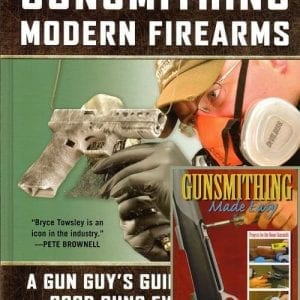The choices hunters face when hunting whitetails where rifles are not an option.
In a lot of places, deer hunters have the choice of using a shotgun or muzzle loader during some of the “shotgun” deer seasons. But how do you choose?
There are pros and cons to each. The most obvious are that a shotgun has more than one shot, so it’s very fast on the reload. In fact, if you using a semi-auto you can be ready for the next shot in about 0.15 seconds. I have gotten pretty good at reloading a muzzleloader over the years, but I am not that fast.
A shotgun does not have to be cleaned every time you shoot it or risk corrosion destroying the firearm as with a ML. That’s a big plus for anybody but a masochist with a gun cleaning fetish. Shotguns are much more reliable in wet weather than a muzzleloader. If you have not experienced the frustration and rage of a muzzleloader failing to fire at a deer while hunting in the rain, well then I’ll wager you have not hunted with them much. Trust me, it will happen; sooner or later it gets everybody.
Accuracy?
I picked at random thirty, 3-shot 100-yard groups from slugs and slug guns I have tested for the NRA over the past few years. I included all the popular, top of the line, 12 gauge sabot slugs and several different shotguns. I came up with an average 100-yard 3-shot group size of 2.54 inches.
I looked at an equal number of 3-shot, 100-yard muzzleloader groups with several rifles. These included a multitude of different rifles, bullets, propellants and propellant charges. The average for those groups is 2.24-inches. With a difference of only 0.3-inch that’s pretty much a dead heat. To be honest, I was surprised. I thought the ML would kick the shotgun’s butt in accuracy, but the numbers don’t lie.
Of course, a shooter can pick an accurate firearm and then experiment with different loads or ammo until he has found the one that is the most accurate in that gun and probably cut those numbers significantly. But that would tell us nothing.
Let’s Look at Some Numbers
Shotgun slugs have changed and evolved over the past few decades so that the modern sabot slug is now very similar to the modern sabot muzzle loader bullet. The Federal 300-grain Trophy Copper Shotgun Slug is an expanding, solid copper bullet with a polymer tip and represents the leading edge of slug technology.
Jessica Stevens at Barnes bullets tells me that their bestselling ML bullet is the 50-caliber, 250-grain Spitfire T-EZ. So, let’s look at the external and terminal ballistics of these two for comparison.
Velocity.
The 3-inch version of the Trophy Copper slug has a muzzle velocity of 2,000 feet per second. With three Pyrodex pellets the Barnes 250 grain bullet has a MV of 2,197 fps. The slug has 1451 fps remaining at 150 yards and 1305 fps at 200 yards. The ML, which started with almost 200 fps more than the slug, has 1628 fps remain at 150 yards and 1467 fps at 200 yards. Slight advantage for the ML.
Bullet path.
With a one-hundred yard zero, the slug is 3.93 inches below the line sight at 150 yards and 11.99 inches low 200 yards. The ML is 3.02 below the line of sight at 150 and 9.33 at 200 yards. So in bullet path, the ML retains a very slight edge over the slug gun. This is due primarily to the higher velocities.
Energy
The slug has 2665 foot-pounds at the muzzle; 1744 ft-lbs at one-hundred yards, 1404 ft-lbs at 150 yards and 1135 ft-lbs at 200 yards. The ML has 2680 ft-lbs at the muzzle; 1806 ft-lbs at one-hundred yards, 1472 ft-lbs at 150 yards and 1195 ft-lbs at 200 yards. While both retain enough energy to reliably kill a whitetail out to 200 yards, the ML does have a very slight advantage in energy over the slug. Again due to the higher velocities, as energy is tied exponentially to velocity.
Bullet Path
With external ballistics, the ML gains a slight edge over the shotgun, but much less than most hunters believe.
Once we go past 200 yards with either of these firearms, things start changing very fast. The acceleration of gravity causes the bullet to drop faster and faster as the range increases. The drop below the line of sight for the first 200 yards is more than doubled in the next 50 yards. In other words, relative to line of sight, the bullets drop more from 200 to 250 yards than they did from zero to 200 yards. It just gets worse from there. At 300 yards, the drop is nearly four times as much as it was at 200 yards. Also, by 250 yards both bullets have fallen below the 1,000 ft-lb energy threshold that conventional wisdom holds is the minimum for whitetail deer.
Wind
With a mild 10 mph wind the slug has drifted more than 21 inches at 250 yards. The ML is 18 inches. A 15 mph wind, just 5 mph more, adds 10.6 inches to slug for more than 31.61. With a 15 mph wind the ML will drift 26.83 inches.
Can you judge the wind with that kind of precision? I know I can’t. Is it 10 mph or 15 mph? Is it a perfect 90 degree angle or is it more like 45 degrees? Is the wind the same all the way to the target?
If the bullet drifts 32 inches at 90 degrees, how much will it drift if the wind is at 45 degrees? (The answer is 15.2 inches, but I had to go to a computer to figure that out.) So, do you hold 21 inches to the wind or 32 inches or 15 inches? Or maybe you are just trying to shoot too far in this wind?
Terminal ballistics
What happens after the bullet hits the deer is a lot tougher to evaluate scientifically. The shotgun slug is .500-inch, which is slightly larger than ML bullet at .451-inch, which means the slug has a slightly larger frontal diameter. With a non-expanding bullet the difference might matter. But they are both expanding bullets. That means the bullet design and impact velocity will control the final frontal diameter. They both expand to a large diameter. This is important for two reasons. One is that with the relatively low velocity of a ML or shotgun the bullets rely on penetration and frontal diameter to cause tissue damage. The bullet must have enough energy stored to push it through the game in its expanded form. I have shot a lot of deer with monolithic, expanding slugs and ML bullets. It is rare to recover either from a dead deer. When I do, it is usually from a finishing shot when the deer is down or with an end to end frontal shot. With most broadside shots the bullet will exit. So I can’t see that there is an advantage one way or the other with either of these in deer hunting. Of course, we are looking at only a small representation of the types of ML bullets or slugs that are on the market. A lead core, thin jacket bullet or slug might not exit. However, a total comparison of the terminal ballistics is for another article. For now, I think it’s safe to say that with similar style projectiles, the two are just about dead even for terminal ballistics while hunting whitetails.
Reality
The bottom line is, ballistics don’t lie, and they state that for any ethical hunter, 200 yards is about the limit of performance for a modern slug gun or modern muzzleloader. I know that’s not what a lot of hunters believe or have been told, but the facts are the facts. Consistently putting a bullet in the kill zone on a whitetail deer with either of these guns past 200 yards is going to exceed the abilities of the vast majority of hunters. Once we get a little beyond that, it will exceed the limits of the guns.
With the low velocity, the rate of bullet drop is rising exponentially past 200 yards so that even a minor error in range calculation can be critical. The farther the distance to the target, the faster the bullet is dropping so the problem is compounded with every yard of distance added.
Say we have a six inch kill zone, which is typical for shooting deer. That means three inches in any direction can put you out of the zone. Three inches is how much the shotgun slug drops between 250 and 259 yards. The ML is a little better, it takes from 250 to 268 yards to drop three more inches.
So with either gun a miscalculation of less than a few yards can cause you to wound or miss, even if everything else is perfect.
By now the accuracy potential of the guns is starting to grow so large that under field conditions it will be mathematically impossible to insure a kill zone hit 100% of the time. The 2.54 inch group size at 100 yards is 6.35 inches at 250 yards, larger than the kill zone. Discounting wind and human error, a ten yard miscalculation and the simple accuracy of the gun can put the impact off more than seven inches.
Winner?
I had thought that a clear winner would emerge here, but that’s not the case. I think it boils down to your hunting style, the firearms that interest you most and which one you trust.
But the truth is all just falls apart past 200 yards with either style of gun. Use your hunting skill; get closer. That’s the concept of a shotgun or muzzle loader anyway.












